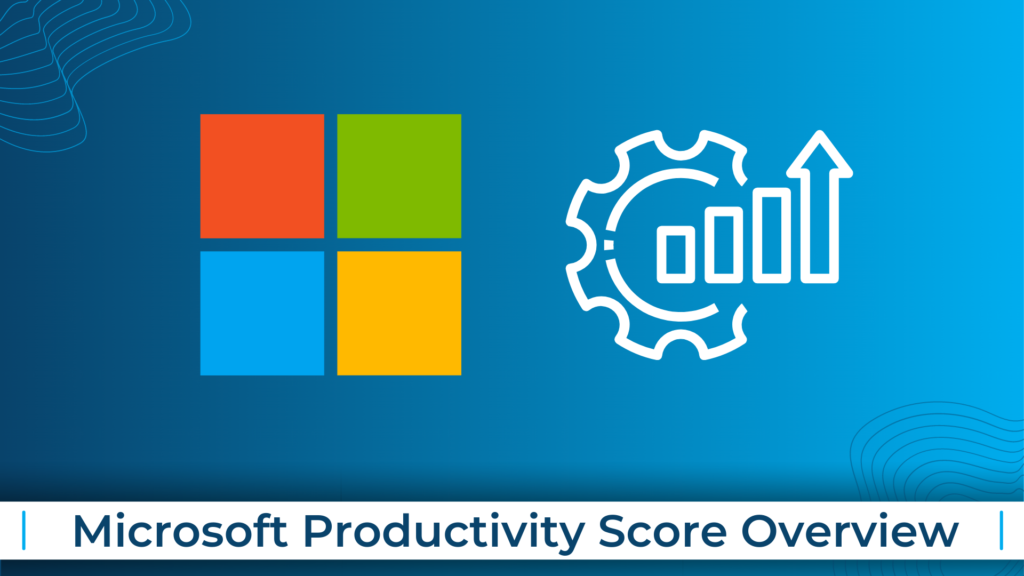
Microsoft Productivity Score Overview
No matter where employees work, tracking their productivity can be challenging. Are they using their tools effectively? What can you do to encourage them to adopt best practices?
Managers often ask themselves these questions. When they focus on the wrong things, it can hinder their ability to empower their team. A simple “clock in/out” time cannot be used to grade productivity.
The value and quality of an employee’s work product is a better metric in today’s hybrid and mobile offices. You also need to look at what might be preventing great employees from doing their best.
A lack of familiarity with technology tools can slow down dedicated workers. It is possible that employees are doing things the same way they always have, and do not realise there is a better way. There is a faster way.
However, addressing productivity can be tricky. It is not a good idea to track every keystroke of a remote employee. That would not likely contribute to positive progress.
Is there a solution?
You can find nuggets of productivity gold if your company uses Microsoft 365. Microsoft Productivity Score is the tool used here.
What Does Microsoft Productivity Score Do?
The Microsoft Productivity Score focuses on a few key areas of employee workflow. As well as looking at them individually, it also looks at them collectively. By looking at your team as a whole, you avoid issues with employees feeling spied on.
It provides you with useful insights that you can share with your staff. As a result, their performance is boosted. Hardware-related information is also included. This can help you find out if your company’s tools are holding people back.
In order to calculate the MS Productivity Score, the following factors are considered.
People Experiences
The purpose of this category is to examine how people work. Are they following best practices for collaboration or are they doing things the hard way? How long do meetings last? Instead of using shared cloud storage links, are employees still emailing attachments?
Here is an example of an insight from this category. Collaboration with online files can save employees an average of 100 minutes per week. The Productivity Score can show you how your team performs in this metric and many others.
Saving 100 minutes per week is equivalent to 86.6 hours per year. Over two full workweeks!
The subcategories within people experiences are:
- Communication
- Content collaboration
- Mobility
- Meetings
- Teamwork
Technology Experiences
Technology experiences analyse the health and performance of your devices. Is there hardware or software on your endpoints that’s causing problems? Does it slow down your team? Is there a problem with network connectivity? Do apps need to be updated?
This category will look at the technology that your team works with and let you know of any risk areas. When technology is not functioning well or isn’t secure, it can slow your business down.
The technology experiences category includes these three subcategories:
- Endpoint analytics (You need Intune for these)
- Network connectivity
- Microsoft 365 apps health
Special Reports
There is more to the experience than just the people and technology. There is a special reports area in Microsoft Productivity Score. Details about business continuity are provided.
You can see how employee collaboration and other activities are changing in this report. It examines these as your company undergoes transitions. As an example, when you transition from remote to in-office work. You will learn how these changes affect the productivity of your team in this report.
How Productivity Score Helps Your Company
Automatic Metrics Tracking
Microsoft Productivity Score tracks your team’s usage of Microsoft 365 applications automatically. The program will then provide you with helpful information about how your staff uses their digital tools.
You can use these metrics to determine whether employees are using best practices. In many cases, they simply need guidance to learn a more efficient method.
Insights to Understand the Data
You can use the tool to gain valuable insights into the data. You won’t just get metrics; you’ll also get context. As a result, you will be able to educate yourself. You can then educate your employees on ways to improve workflow and save time.
A quick response to a question, for example, saves time. Using @mentions can help you accomplish that, but you might not be aware of it. Productivity Score tells you how many people use @mentions in team communications. Also, how much this increases response rates.
Recommended Actions to Take
You also gain guidance on what to do with the information. Your Productivity Score will provide you with actionable recommendations for improving a metric. Your productivity will improve as a result.
In addition to the metric, insight, and recommendation, this tool is comprehensive.
How Can Microsoft Productivity Score Help You?
We can help your organisation get started with this great tool. Enhance the productivity of the company by providing solutions. Call us and let’s talk!
Comments are closed.